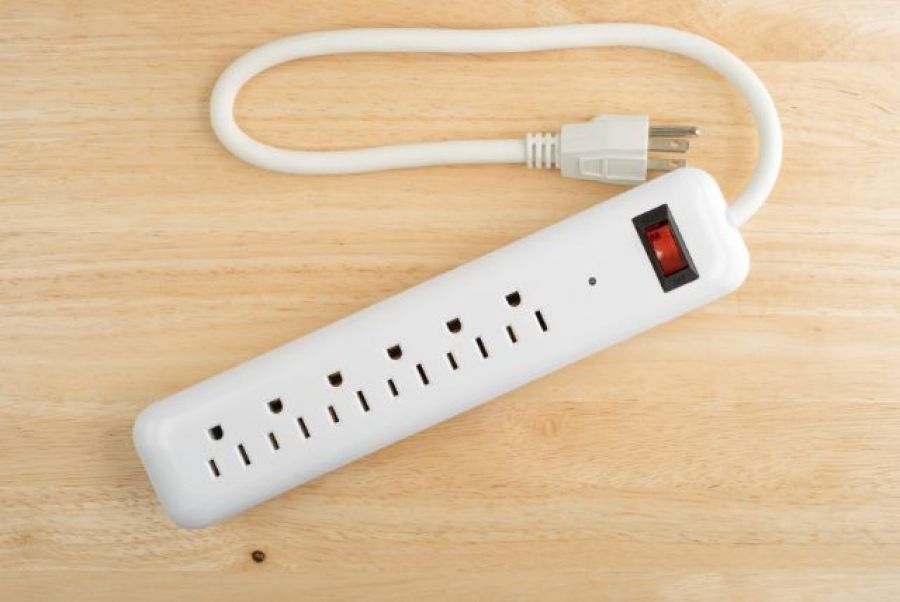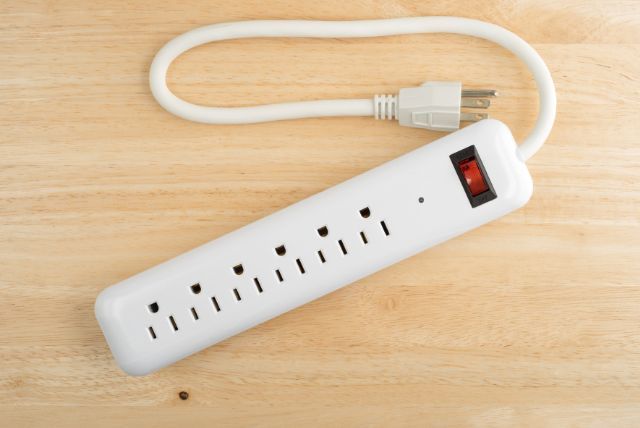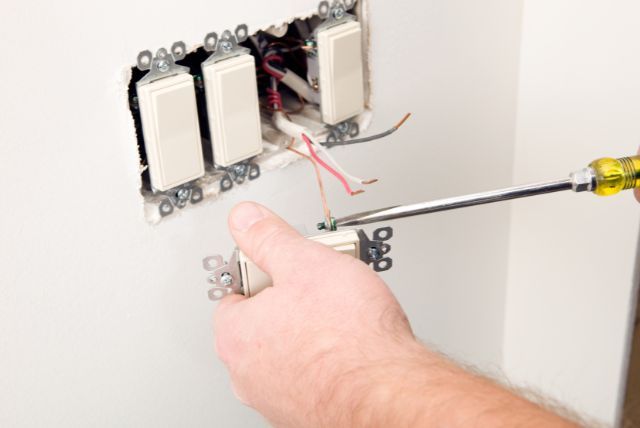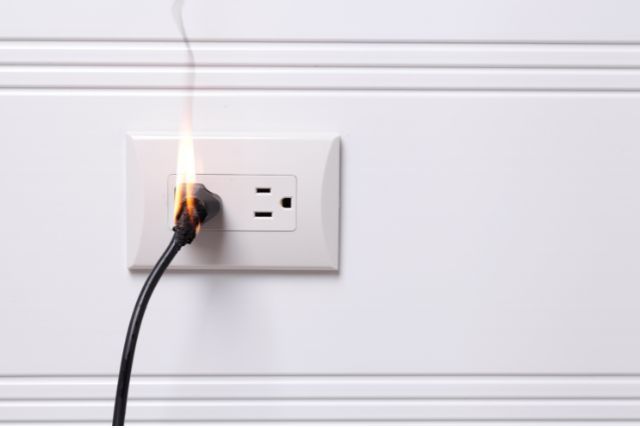How Do Surge Protectors Work?

Table of Contents
ToggleHave you ever had one of those moments where a storm hits, and you’re scrambling to unplug your electronics, fearing a power surge might fry them? That’s where a good surge protector comes in handy, protecting your devices from unexpected spikes in electrical voltage.
But how do surge protectors work? These devices monitor the electricity flowing to your appliance and other electronic devices. When they detect a surge in power that could be harmful, they divert the excess electricity away from your electronics, preventing damage.
In this post, we’ll look at what exactly surge protectors are and break down how they work. Let’s get into the specifics of how surge protectors do their job and why you should consider installing them in your house.
What Are Electrical Surges
Sudden spikes in electrical voltage are known as electrical surges. These aren’t your typical voltage levels. They’re much higher and can occur in the blink of an eye. They can happen for several reasons, including:
- Lightning strikes: They can hit power lines directly or strike nearby objects, inducing a surge in the lines.
- Malfunctioning appliances: They can send unexpected voltage spikes through your circuits. That usually happens with older appliances.
- Overloaded outlets or circuits: When you have too many appliances plugged into a single outlet or circuit, that can cause overloading, which will lead to a surge.
- Power grid issues: Equipment failure or sudden changes in demand can also cause surges.
Potential Damage from Surges
Excessive voltage can fry circuits and degrade the internal components of your devices, shortening their lifespan or outright killing them. That’s why you need to surge protectors in your house. They divert the extra voltage from your devices, ensuring that only the standard power level reaches them. Investing in quality surge protectors can save you from the headache of replacing damaged appliances and electronic devices.
The Basics of How Surge Protectors Work
When a surge protector senses voltage that exceeds the normal level, which usually is 110-120 volts in the US, it jumps into action. This excess voltage poses a real threat to anything plugged into an outlet.
It diverts the dangerous excess voltage to the ground line away from the outlets and your electronics. This process happens quickly, protecting your electronic devices from damage without you ever knowing there was a threat.
Components of a Surge Protector
A surge protector has several components that work together to keep your devices safe. The most common of these are:
- Metal Oxide Varistors (MOV): A pressure-sensitive valve that only opens when the voltage gets too high. Under normal conditions, it does nothing – it’s just there, waiting. But when the voltage spikes, the MOV reduces the resistance and allows the excess electricity to pass through it and into the ground wire, effectively neutralizing the threat.
- Gas Discharge Tubes (GDT): They kick in for big surges, like those caused by lightning. GDTs can handle more energy than MOVs and work by creating a short path to ground for the excess voltage, protecting your devices.
- Circuit breaker: It cuts off the power if the current flowing through gets too high, preventing overheating and potential fires.
- Inductors: These components help filter out excess energy, ensuring that only clean, steady power reaches your devices.
Limitations of Surge Protectors
However, you can’t expect the same level of protection from all surge protectors. The differences can be substantial, and they boil down to the quality of their internal components. More expensive units typically offer better protection, thanks to higher-quality MOVs, GDTs, and additional features like inductors.
Also, surge protectors don’t last forever. Over time, the protective components inside can wear out, especially if they’ve had to defend against several large surges. This degradation isn’t always apparent, so it’s best to replace surge protectors every few years or immediately after you know they’ve taken a significant hit. A surge protector can’t save your devices if it can no longer do its job due to wear and tear.
Types of Surge Protectors
When considering the types of surge protectors available, you’re looking at two main categories: strip and whole-house surge protectors.
Strip surge protectors are the ones you’re likely most familiar with. They’re power strips that let you plug in multiple devices in one spot.
They’re super convenient, especially if you’ve got a lot of gadgets in one area of your home. However, they do have limitations. While they can protect the devices plugged into them, they can’t shield your home’s electrical system from surges.
On the other hand, whole-house surge protectors go into your home’s electrical panel. That means they offer a much broader level of protection, safeguarding not just your TVs, computers, and stereo systems but also big-ticket items like your HVAC and refrigerator from power surges. They’re more expensive upfront and require professional installation. However, they’re often worth the investment because of the added protection.
Features to Look For in a Surge Protector
When picking a surge protector, think about its joule rating. The higher this number is, the higher the level of protection, as this means your protector can absorb more energy before burning out.
Then there’s the response time, which is how quickly the protector can react to a surge. Faster is better here because even microseconds matter when a surge hits. Think about the number of outlets you need. Ensure the surge protector has enough spots for all your devices.
The UL rating of the surge protector speaks volumes on its quality. For example, a UL 1449 rating is a must-have as it indicates the device has met stringent safety standards for surge protection. The specifics of the rating can tell you about the device’s clamping voltage (the voltage level at which the protector begins to block or redirect excess electricity), among other things. This rating can help you gauge how well a surge protector will perform in real-world conditions.
Maintenance and Replacement
You might not realize it, but surge protectors don’t last forever. Signs that it’s time for a new one include visible damage, like a cracked case or frayed wires. There are more subtle indicators, such as the surge protection light (if yours has one) no longer illuminating.
Also, if you’ve had a major power surge recently, it’s a good idea to swap out your protector even if it looks fine—its internal components might be fried. Generally, you need to check your surge protectors every couple of years.
If you’re not confident about assessing the state of your surge protectors, you should call in a professional electrician. They can give your devices a thorough check and ensure your home stays safe from unexpected electrical spikes.
Get Surge Protection In Woodland Hills, CA
Getting your head around the question of “How do surge protectors work?” is a smart move to safeguard your electronic devices. These gadgets manage unexpected spikes in voltage, ensuring your appliances and gadgets stay safe and sound.
If you’re ever in doubt about choosing a surge protector or have unique requirements, don’t hesitate to reach out to the professionals at Prime Electric in Woodland Hills, CA. We can inspect your electrical setup and give you a free estimate for the work that needs to be done.
With over 35 years of experience, your switches and wires are in stable hands. So get in touch today, and let us protect your home!











Leave a Reply